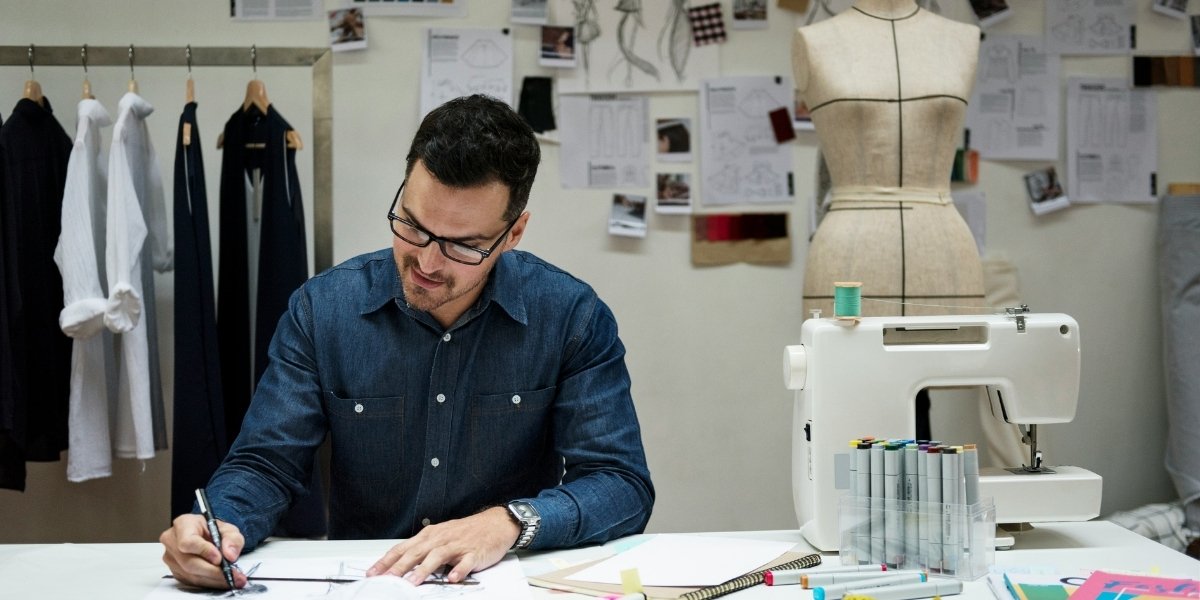Fashion design is an exciting and dynamic field that blends art, creativity, and technical skills. Understanding the fundamentals of fashion design is essential for anyone aspiring to enter the fashion industry or those who simply wish to understand the processes behind the garments they wear. This explores the key concepts and principles that underpin successful fashion design, from understanding the design process to fabric selection and building a fashion collection.
Introduction to Fashion Design
Fashion design is the art of applying design, aesthetics, and natural beauty to clothing and accessories. It involves creating wearable art by balancing creativity with functionality. Fashion designers use their understanding of materials, trends, and human body shapes to craft designs that are not only visually appealing but also practical and comfortable.
The fashion design process begins with inspiration and concept development. Designers often draw inspiration from various sources, including nature, architecture, art, and cultural movements. Fashion design also requires a deep understanding of consumer needs, as designers must anticipate what people will want to wear based on their lifestyles, climates, and cultural influences. The goal of fashion design is to create clothing that not only reflects personal style but also responds to the changing demands of society.
Understanding the Design Process
The design process is a multi-step journey that takes a designer from initial concept to finished garment. It typically involves several key stages:
Research: Designers start by gathering inspiration and researching trends, colors, fabrics, and other elements that may influence their designs. This step also includes studying the market and understanding the needs of the target audience.
Sketching and Concept Development: Once the research is complete, designers begin sketching their ideas. These sketches help to visualize the design concepts and guide the selection of fabrics and other materials.
Pattern Making: After the design is finalized, patterns are created for each piece of the garment. Pattern making involves translating the sketch into technical patterns that can be used for cutting fabric.
Sewing and Construction: At this stage, the garment is sewn together, either by hand or using sewing machines. Designers often collaborate with skilled pattern makers and seamstresses during this stage to ensure the design is executed correctly.
Fitting and Adjustments: After the garment is constructed, fittings are done to make any necessary adjustments. This step ensures that the clothing fits the body properly and aligns with the designer’s vision.
Final Presentation: The final stage of the design process involves presenting the completed garment, often through fashion shows, photoshoots, or a lookbook to potential buyers and the public.
The Importance of Creativity in Fashion
Creativity is at the heart of fashion design. Designers must be able to think outside the box, pushing the boundaries of fashion while maintaining practicality and wearability. Creativity in fashion design means not just following trends, but interpreting them in innovative ways that speak to the designer’s unique vision and artistic perspective.
Successful fashion designers are known for their ability to combine aesthetics with function, creating pieces that are both beautiful and wearable. Creativity in fashion design often extends beyond the creation of garments to include marketing, branding, and the ability to capture the imagination of the consumer.
Key Fashion Design Principles
Fashion design is not just about making clothes look good—it’s also about ensuring that the designs are functional, comfortable, and flattering. Several principles guide fashion designers in creating garments that meet these goals:
Balance: This principle involves creating a sense of equilibrium in a design, whether through symmetry or asymmetry. Balance in fashion design can help ensure that clothing is visually appealing and not overwhelming to the eye.
Proportion: Proportion refers to the relationship between different elements of the garment. Designers use proportion to create garments that enhance the body shape and appear balanced, such as designing a garment with a fitted top and a flared bottom to accentuate the waist.
Rhythm: Rhythm in fashion design is created through the repetition of elements such as colors, lines, and shapes. This helps guide the viewer’s eye through the design, creating a flow or movement within the garment.
Emphasis: Every garment needs a focal point, whether it’s a decorative element, color, or unique fabric. Emphasis draws attention to the key features of the garment and ensures that it doesn’t appear flat or monotonous.
Harmony: Harmony refers to the overall cohesion of the design. A harmonious design integrates all elements—fabric, color, shape, and proportion—in a way that feels unified and complete.
Color Theory and Its Role in Fashion
Color is one of the most powerful tools a fashion designer has at their disposal. It influences mood, evokes emotions, and can significantly impact the way a garment is perceived. Understanding color theory is essential for creating effective and aesthetically pleasing designs.
Color theory involves understanding the relationships between colors, including complementary, analogous, and triadic color schemes. Designers must be aware of how colors work together and how they can be used to create a specific mood or statement.
For example, bold colors like red and yellow may convey energy and excitement, while softer tones like pastels evoke calm and tranquility. Understanding how color affects a design can help a designer create pieces that resonate with the intended audience and fit within current color trends.
Fabric Selection and Textile Knowledge

Fabric selection is a crucial step in the fashion design process. The choice of fabric affects the look, feel, and functionality of a garment. Designers must have a deep understanding of different fabrics, their properties, and how they interact with the body.
Natural fabrics like cotton, silk, and wool have different textures and drapes compared to synthetic fabrics like polyester and nylon. Each fabric has its unique characteristics that influence how it behaves in a design. For example, flowy fabrics like chiffon create soft, airy designs, while more structured materials like denim and leather offer durability and shape.
In addition to understanding fabric types, designers must also be aware of sustainability and ethical sourcing. With growing concerns about the environmental impact of fashion, many designers are turning to eco-friendly materials, such as organic cotton or recycled fibers, to create their collections.
Building a Fashion Collection
A fashion collection is a cohesive set of designs that work together as part of a broader theme or vision. Building a collection requires careful planning and an understanding of the target audience, current trends, and the designer’s creative direction.
When creating a collection, designers typically begin by selecting a central theme or inspiration that will guide their designs. This could be anything from a historical period, nature, or even a particular color palette. From there, the designer creates a series of garments that align with this theme, ensuring that each piece complements the others in terms of style, color, and fabric.
A well-executed fashion collection tells a story, showcases the designer’s unique voice, and presents a variety of garments that appeal to different tastes and occasions. The collection may be presented in a runway show, photoshoot, or lookbook, depending on the designer’s goals.
Fashion design is a blend of creativity, technical knowledge, and artistic expression. Understanding the fundamentals of fashion design—from the design process and key principles to color theory and fabric selection—provides aspiring designers with the foundation needed to create garments that are both beautiful and functional. As designers build their collections, they must balance artistic vision with practicality, ensuring that their designs resonate with consumers while staying true to their unique style. Whether designing for the runway or the everyday wardrobe, these fundamentals form the core of successful fashion design.








